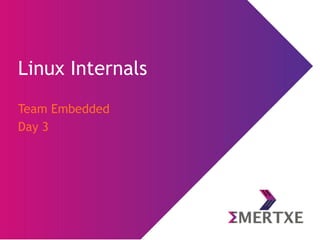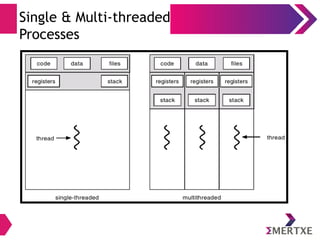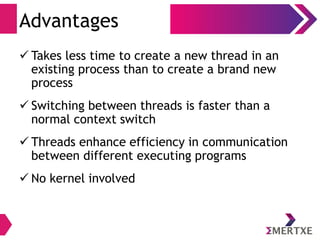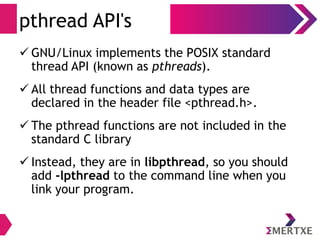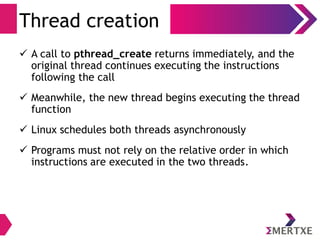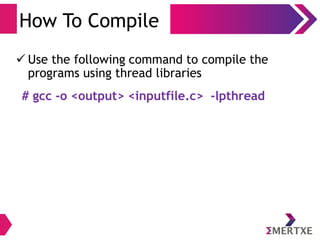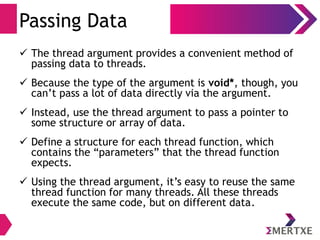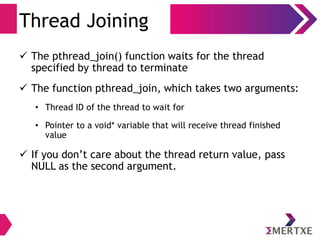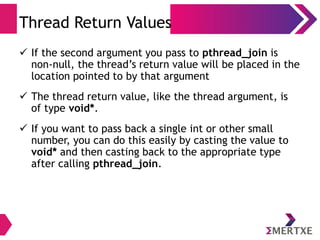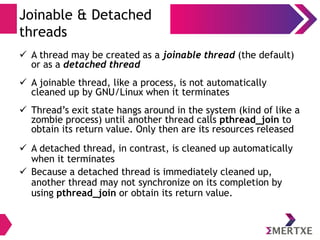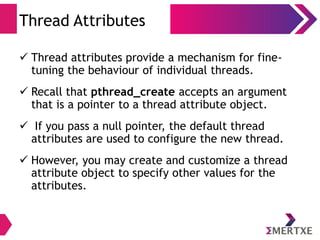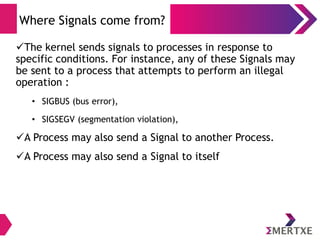The document discusses Linux thread management, detailing the concepts of single and multi-threaded processes, thread creation and synchronization, and mechanisms like mutexes and semaphores to avoid race conditions. It also explains how signals function in Linux, providing a framework for inter-process communication and handling events. Additionally, it covers process termination and attributes, emphasizing best practices for programming with threads to enhance efficiency and avoid bugs.
